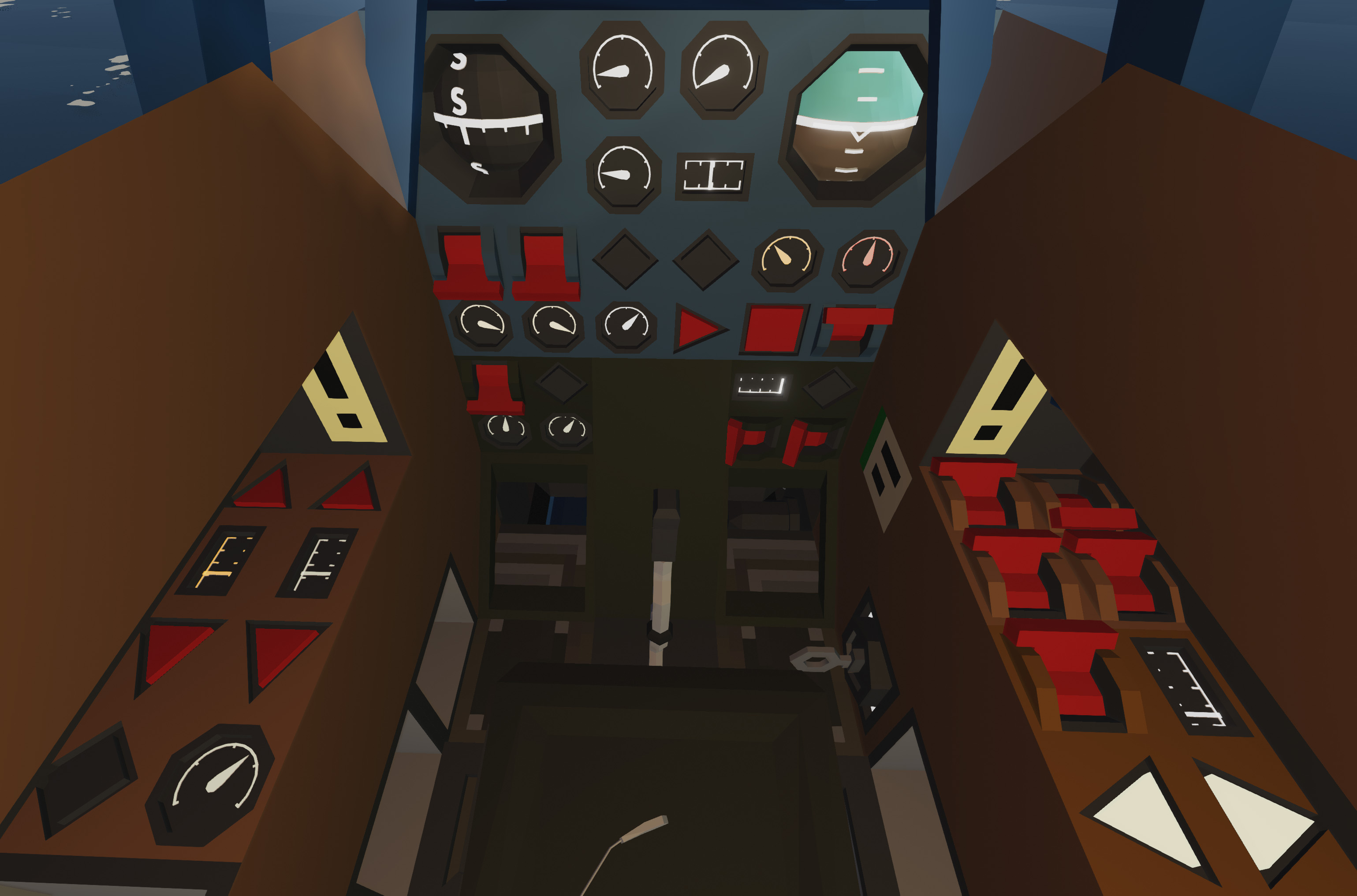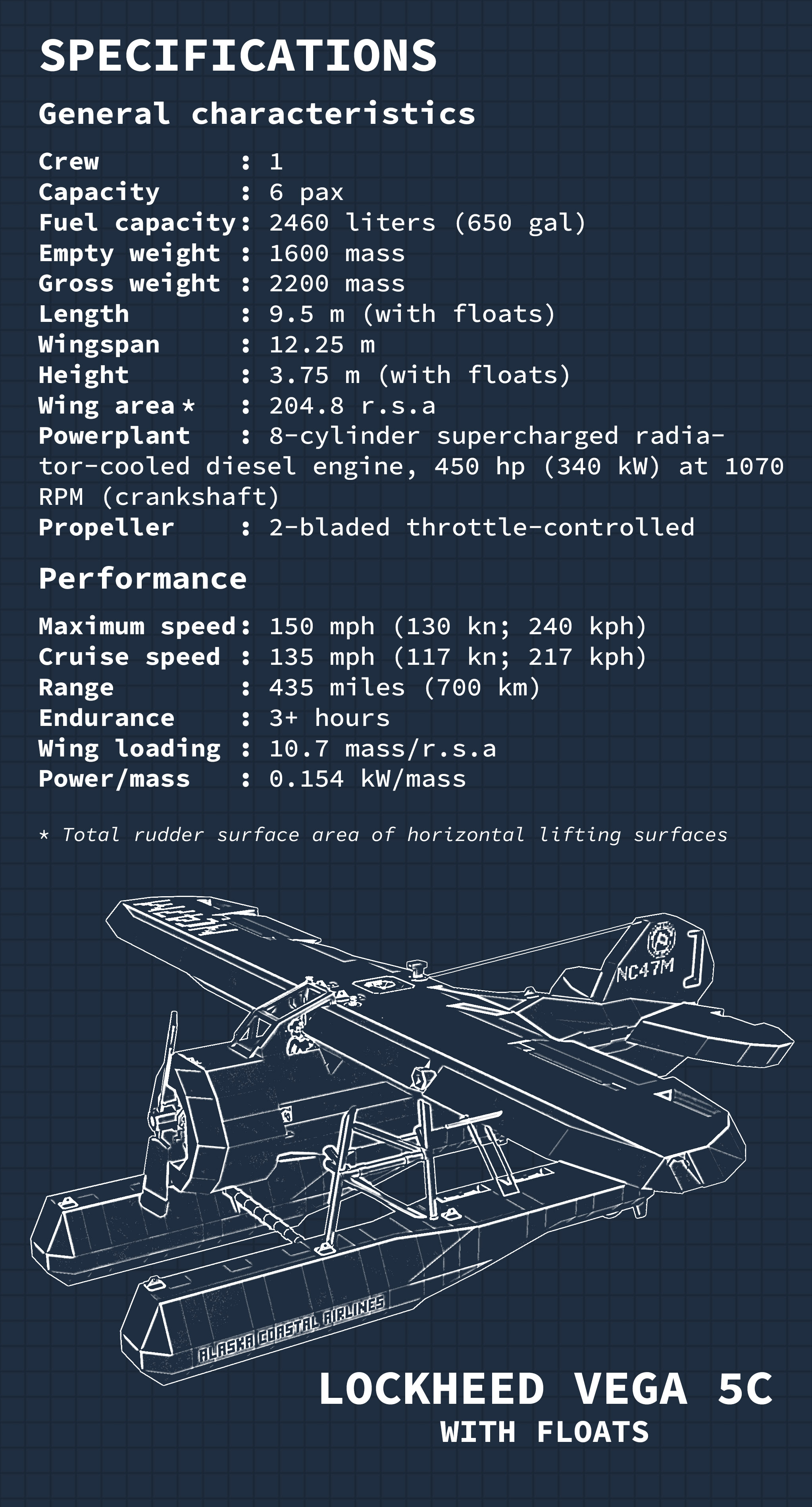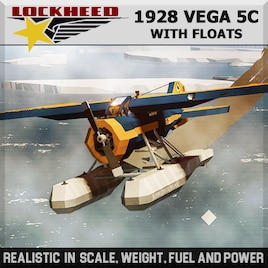








Lockheed Vega 5C with Floats
Vehicle, Air, Sea, Exploration, Creative, Advanced, v1.9.24, HOTAS

Designing of this began over a month ago. However it took long time to finish because I redesigned or improved some of my key microcontrollers for the modular engine, artificial buoyancy and airplane gyro. It also marks the beginning of a new design characteristics of my future vehicles: as well of being 1:1 scale, it now has realistic empty/gross weight, fuel weight and powerplant (hp/kW). I meas...
Розробник: Thales
Дата створення: 12 Feb, 2022 @ 4:41pm
Оновлено: 17 Jan @ 12:54pm
Підписників: 28580
Розмір (розпакований) : 0.696 MB

HISTORY
The Lockheed Vega is an American six-passenger high-wing monoplane airliner built by the Lockheed Corporation starting in 1927. It became famous for its use by a number of record-breaking pilots who were attracted to the rugged and very long-range design. Amelia Earhart became the first woman to fly solo across the Atlantic Ocean in one, and Wiley Post used his to prove the existence of the jet stream after having flown around the world twice. - Wikipedia
The Vega made a name for itself in setting records, some 34 in all being accumulated. Long distance flights using the Vega included the prototype built for George Hearst (X2788 – c/n 1 – Golden Eagle – ex NX913), which was an entrant in the Dole Race from San Francisco to Hawaii commencing on 16 August 1927 flown by J S Frost and G Scott but was never seen again. Amelia Earhart set a record by flying from Los Angeles to New York in 1932; and later was the first woman to fly the Atlantic solo in a Vega (NC7952 – c/n 22). This aircraft survives at the National Air & Space Museum, Smithsonian Institute, Washington DC.
Probably the most famous was Wiley Post, with Australian Harold Gatty as navigator, who flew around the world in June 1931. This aircraft, a Model 5B (NR105W – c/n 122) named Winnie May, covered 24,902 km (15,474 miles) in 8 days 15 hrs 51 mins, of which 107 hrs 2 mins was spent in the air. This machine is also preserved in the Smithsonian Institute in Washington DC. Another flight was that of Jimmie Mattern and Benny Griffin (c/n 122 NR105W) who flew in 1933 from New York across the Atlantic in 10 hrs 50 mins to Berlin, continued on over the Ural mountains to Siberia and returned via Alaska. - Aeropedia

Powerplant: Engine controller on this was probably the biggest challenge for me when making the Vega and took the most time along with developing the Engine Thrust Test Platform I shared few weeks ago for the purpose of estimating realistic engine power output. Basically throttle and mixture levers control the crankshaft-dependant supercharged air and fuel manifolds with PID in accordance to RPM and automated propeller pitch. Propeller pitch (collective) is neutral up to a certain throttle value by allowing it to idle. It increases linearly to the max at 0.7 throttle (lever value) which is the most efficient (because engine gets 1.0 input to the air manifold between 0.7 and 1.0 values of throttle lever). Then it decreases again beyond 0.7 throttle by allowing higher RPMs. Thus, engine is being used at full capacity between 0.7 and 1.0 throttle values. It's also possible to reverse by simply holding the Down key in water.
Airplane gyro: It's mostly the same flight controller I made almost a year ago. The new addition is the mouse control option. It's quite basic with a handy feature of holding space key to temporarily disable mouse control to look around while the airplane continue to get the last input it received.
Other notes and features:
- Not designed for infinite fuel and electric, DISABLE BOTH. Otherwise engine may not work as intended.
- Takeoff with headwind, not tailwind if it is windy.
- Well optimized by having only a few sub-bodies where it's necessary such as engine maintenance hatch for repairs.
- Lots of inventory equipments and seating for its small size
- Highly polished handling and easy controls achieved by having proper lift providing fins and wing components, thus allowing full control in the air without engine power
- Altitude and direction hold autopilots
- There are paintable indicators which contain texts all over the plane to guide you or telling the specifications of the vehicle
- There's a warhead hidden inside to simulate fuel explosion if flames reach fuel tanks.
- Throttle is locked by magneto switch
- Booster coil provides high energy to the engine starter, by holding starter button only wouldn't be enough to reach required RPM.
- Mixture lever controls Air to Fuel ratio for the engine. Rich for more power output, lean for better efficiency and less heat.
- Cooling system is not enough to sustain prolonged time of full throttle. Reduce throttle to 0.7 for long periods of flight.
- There are low fuel, low battery and high temp indicators to help you understand problems.
- There are fuel remaining time and range indicators and also reserve battery.
- Heater works only in cold to not cause engine overheating
- Generator works only if the battery is under 99%
- Stormlink compatible
Below are the specifications of the vehicle I made for Stormworks. To see real specifications of the Lockheed Vega, look for Wikipedia or other sources.

Як завантажити моди?
Натисніть на кнопку вище та завантажте обраний мод з файлового сховища.Як встановити мод?
Див. секцію "Як встановити".Чи безпечний завантажуваний файл?
Моди перезаливаються нами з оригінального джерела, без жодних змін. Ми лише запаковуємо їх в звичайний архів. Додатково можете перевірити архів на наявність загроз за допомогою будь-якого антивірусу або онлайн-сканеру на кшталт virustotal.com. Також рекомендуємо робити резервні копії ваших сейвів, про всяк випадок.
For vehicle mods
- Download the .zip archive containing the vehicle mod files.
- Locate your game's root folder.
- Navigate to
rom\data\preset_vehicles_advancedand extract the files there. - Rename both files to something recognizable, ensuring they share the same base name but different extensions.
- Launch the game and go to the Workbench's Presets tab to see the new vehicle mod.


